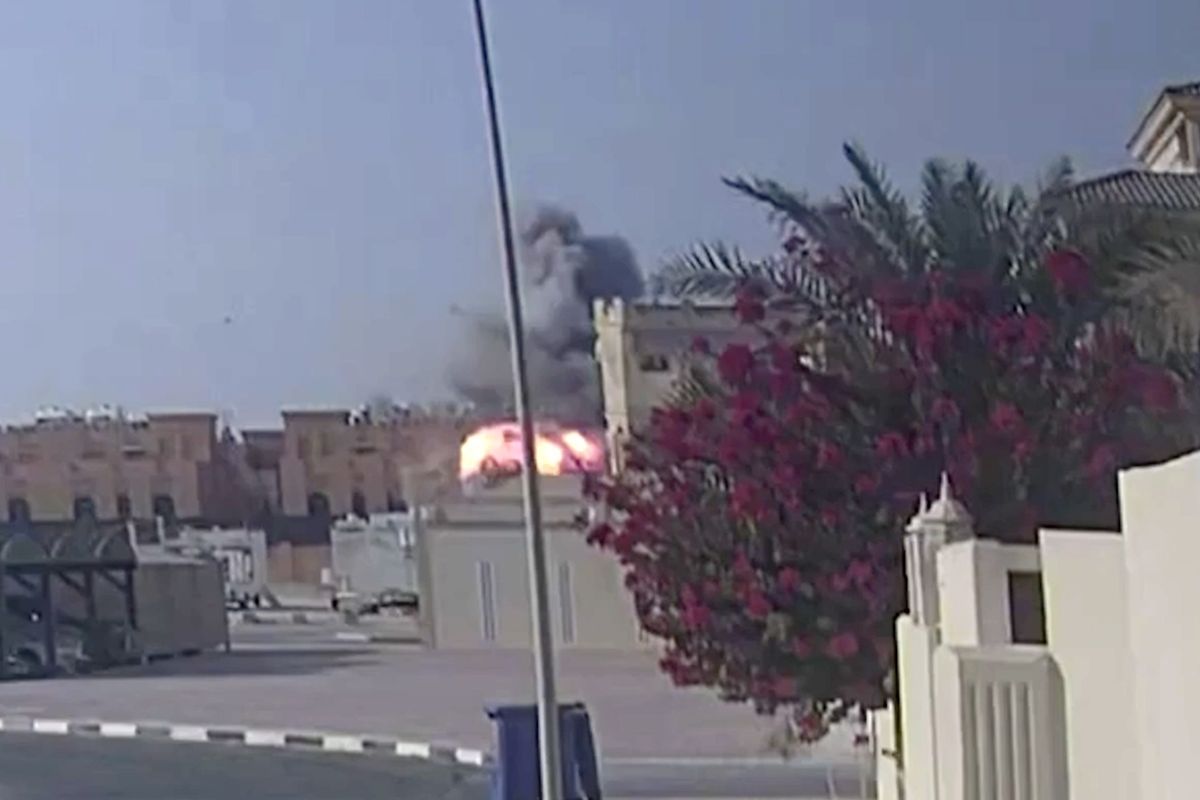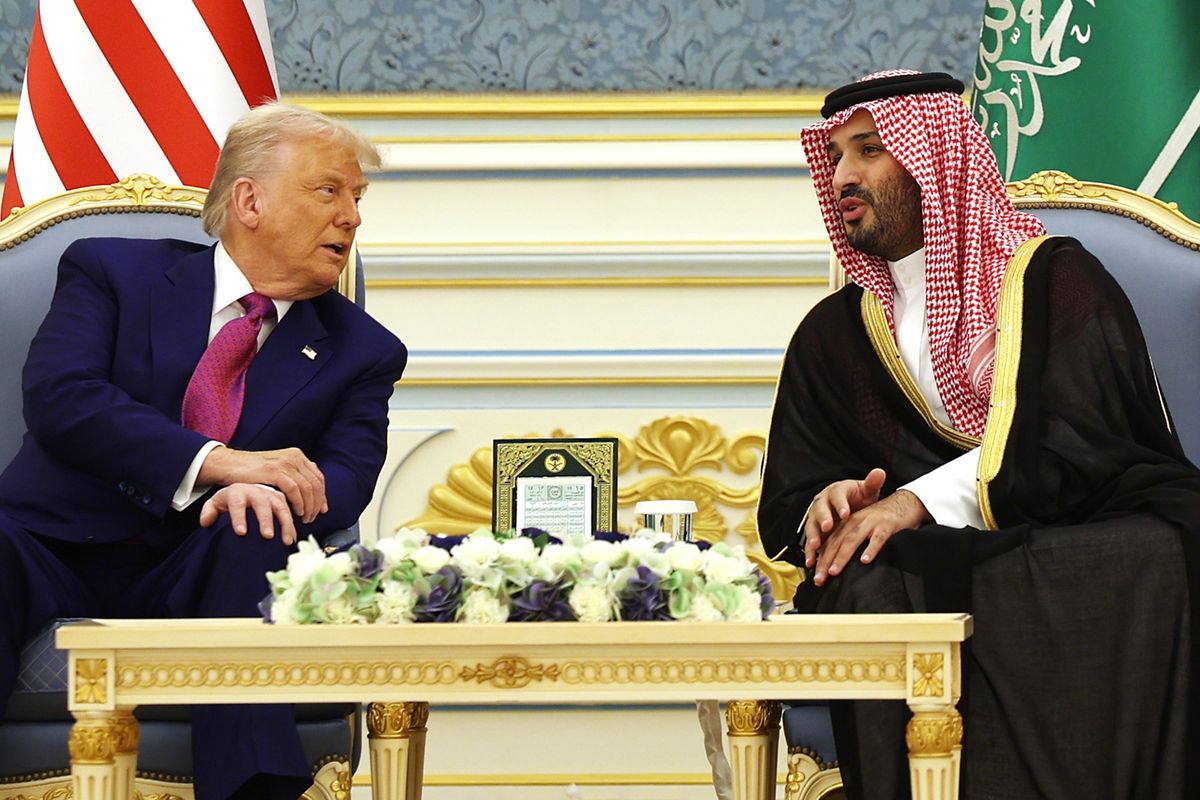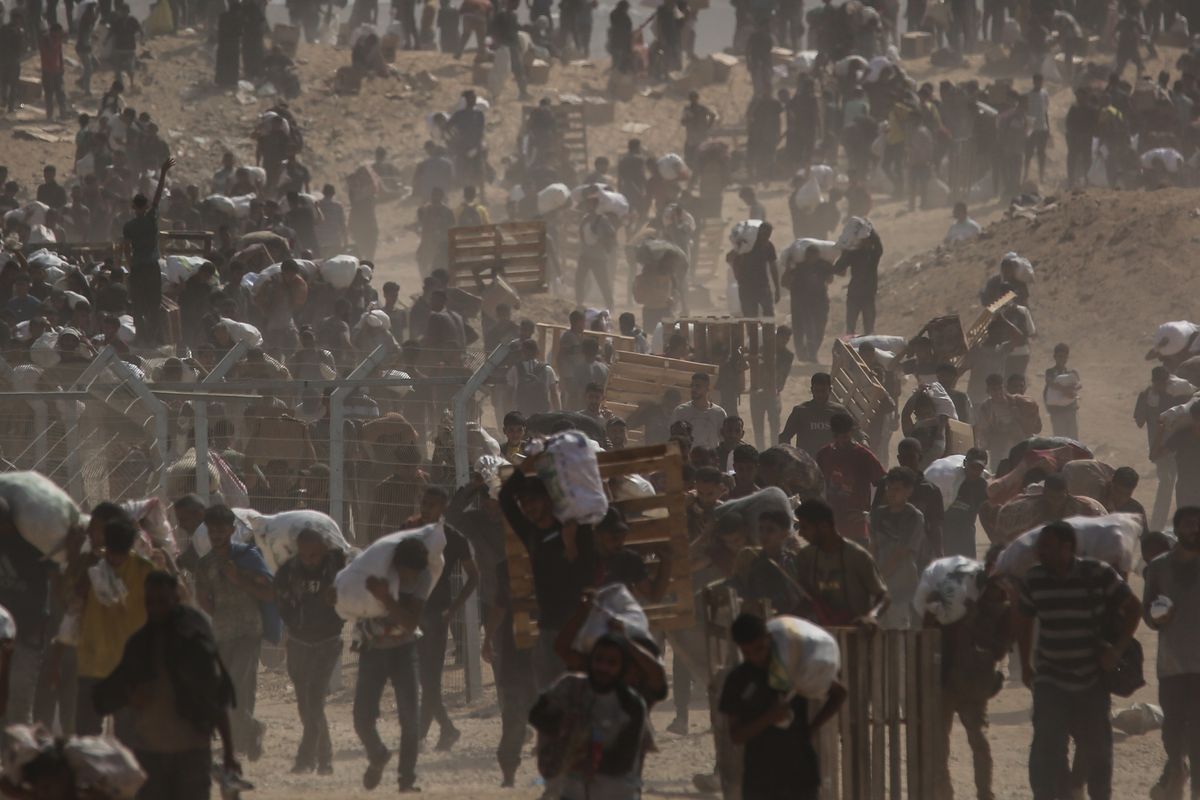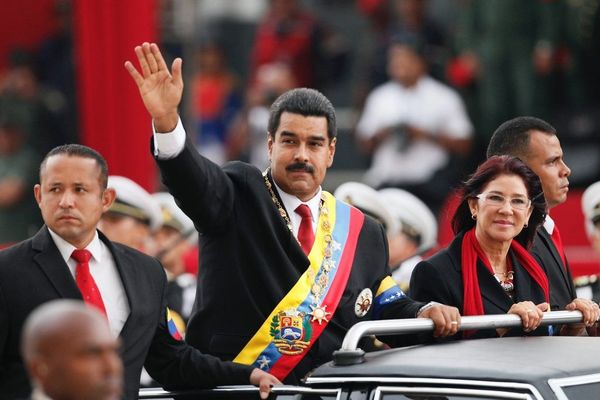EXPERT PERSPECTIVE — Change is a constant in the Middle East as the past several months have demonstrated with focused attention on protests in Iran, potential changes in the Saudi Arabia-China relationship and dealing with climate change, which has rocked the region in substantive ways.
More than 500 people have been killed in Iran since protests erupted in September following the death of 22-year-old Mahsa Amini, who was in police custody on a charge of violating the country’s mandatory hijab law, when she died. Her death sent outraged Iranians to the streets calling for change, in protests that have been met with force from the regime. At least two protesters have been executed and dozens more have been sent to prison. Yet protests continue.
In Saudi Arabia, Chinese President Xi Jinping’s visit to Riyadh earlier this month, sparked diplomatic complaints by Tehran and criticism of China in Iranian media.
And one of the most vulnerable regions on Earth when it comes to climate change, is now experiencing heat extremes, floods, droughts and sandstorms.
So, what should we expect in the Middle East in 2023?
The Cipher Brief tapped Middle East and Energy Expert Norm Roule — who served as National Intelligence Manager for Iran at the Office of the Director of National Intelligence, and now serves as a private consultant on the region — for his candid assessment of the issues having the most impact on the region today and where the region is headed in 2023.
Norman T. Roule, Middle East & Energy Expert
Norman T. Roule is a geopolitical and energy consultant who served for 34 years in the Central Intelligence Agency, managing numerous programs relating to Iran and the Middle East. He served as the National Intelligence Manager for Iran (NIM-I) at the ODNI from 2008 until 2017. As NIM-I, he was the principal Intelligence Community (IC) official responsible for overseeing all aspects of national intelligence policy and activities related to Iran, to include IC engagement on Iran issues with senior policy makers in the National Security Council and the Department of State.
You are reading Cipher Brief Subscriber+Members-only content. A higher level of access to national security expertise in an ever more complicated world.
The Cipher Brief: As we wrap up 2022 and look to where events will lead in 2023, how are you assessing the ongoing unrest in Iran?
Roule: The courage and tenacity of Iranian protestors has transformed how many countries see the Islamic Republic. International public opinion now calls for more pressure on Iran, a marked shift from only a few months ago. Since unrest erupted following the cruel killing of Mahsa Amini, the world has witnessed around 1,200 individual protests, during which more than 18,000 Iranians have been detained by the regime, including iconic film stars. More than 500 protesters have died, including about 70 children. The government has responded with violence, brutal interrogations — that sometimes, involved rape — and the use of pellet guns that blinded some protestors. If you’re looking for a model of people risking their lives for freedom against an oppressive regime, this is it.
“The Islamic Republic — at least in its present form — is highly unlikely to survive this process.”
The Cipher Brief: Protestors quickly moved from anger over Amini’s death to calls for regime change. What’s driving this unrest as we enter the new year?
Roule: Iran is entering the advanced stages of a tectonic social and political transition that has been developing for almost two decades. The Islamic Republic — at least in its present form — is highly unlikely to survive this process. However, the time of its final passing and the nature of a successor regime remains challenging to predict. I do not doubt that many senior Iranian officials are thinking about this transition, the unpopularity of regime ideology, and how they plan to navigate through this period. We should consider what this will mean for the region and our interests.
The entropy of regime authority and its growing alienation from Iran’s population has accelerated significantly during the past five years. Unrest featuring defiance of the regime is an annual event. Protests were sparked by a stolen election in 2009, economic problems, and social restrictions, but in each case, the unrest escalated into calls for regime change and the ousting of the Supreme Leader.
A large part of the regime’s problem is that Iran’s post-revolutionary society and leadership are evolving in parallel but disconnected paths. Each has been shaped less by 1979, and the Iran-Iraq war and instead by the post-2001 world. But the regime’s increasingly stale political ideology and corrupt economic system have remained unchanged, much like the final years of the Soviet Union. Elites may not believe in the system, but they can profit by operating within its architecture. The population, on the other hand, enjoys no such benefits. Economic malaise is omnipresent with or without sanctions relief. Iran’s regional policies and military siphon off state resources. Politics offers little hope for change as even so-called reformist politicians seek to reform an archaic regime.
The Cipher Brief: What happens when the current Supreme Leader passes from the scene? Will that be enough to end the unrest?
Roule: Absent some event that brings millions of Iranians into the streets, the near term is likely to see the continuation of the current stalemate. The protestors may not be able to overthrow the regime, but regime efforts to end the protests have also been unsuccessful. The lack of organization and leadership among the protestors is a double-edged sword: it denies the government a single target that can end the unrest but it also means protestors cannot mount campaigns to erode government control.
Looking further out, we ought to think about Iran’s ruling elite. Indeed, Iran is ruled by a diminishing number of veterans of 1979, but it is managed by relatively young hardliners drawn from networks often connected to the Revolutionary Guard. Absent a complete overthrow of the regime that sweeps these officials and their networks from the scene, this is the pool from which Iran’s next leaders will be drawn. Transition is unlikely to begin until the death or incapacitation of Khamenei. I expect security forces have already started to develop plans to minimize the threat of political unrest when this happens.
The Cipher Brief: How will the next generation of Iran’s leaders rule, and what does this mean for the U.S. and its partners?
Roule: We’re in crystal ball territory and we need to approach this with some humility. That said, if drawn from the senior most tiers of Iran’s current elite, it is unlikely that a post-revolutionary government will be any less aggressive in terms of cracking down on dissent or U.S. and partner interests. Policymakers who seek to engage this crowd should consider how China, Russia, and Cuba developed after the passage of their revolutionary generations.
Iranian President Ebrahim Raisi and the inner circle around Khamenei no doubt see themselves in positions of authority post-Khamenei. Such a leadership may be willing to compromise on some domestic social and economic policies. The survival of the post-Khamenei leaders will hinge on their ability to broaden support amongst an alienated population while protecting the equities of Iran’s security elite.
“A large part of the regime’s problem is that Iran’s post-revolutionary society and leadership are evolving in parallel but disconnected paths.”
The Cipher Brief: Do you see any potential wildcards that would take Iran in a different direction?
Roule: It’s not hard to think of many things that could shift events. Here are a few:
• Regarding the unrest, the current turmoil has yet to shut down core public services or draw mass military defections. Evidence of either would indicate an erosion of regime survival. Likewise, regime longevity would be questioned if the protestors developed an organized campaign of violence or if protests began to resemble an insurgency. The arrival of a domestic or external leader capable of anchoring opposition would also be significant.
• In terms of leadership succession, we tend to simplify the discussion to a few individuals vice their networks and systems. I think this is a mistake, but let’s go with that. Transition requires stability and the current unrest makes this a bad time for such a process to begin. But if it would be a challenge to do this in the wake of the passing of the Supreme Leader, what would happen if President Raisi were to pass away first? He has been groomed to replace Khamenei, and his loss would open the field to the Revolutionary Guard.
• Then there are external or environmental pressures. An expansion of Iran’s nuclear program that crossed Israeli red lines or a catastrophic success by an Iranian missile attack could provoke military action against Iran. Natural events such as a massive earthquake would also challenge regime capabilities. I’m not suggesting the U.S. should want any of this to happen, but we have to consider the impact of events — even if they are unlikely to happen.
The Cipher Brief: Let’s move across the Persian Gulf to the Arabian Peninsula. Chinese President Xi Jinping’s visit to Riyadh and subsequent meetings with Arab leaders received a lot of press coverage. What did you make of the visit?
Roule: The visit of President Xi to Riyadh offered a pretty good illustration of China’s maturing commercial and economic engagement with the region, specifically with Saudi Arabia. Some argue that the trip was a message to the U.S. but I think that understates more essential drivers and the history of the relationship that Washington has been aware of for years.
This was the fifth visit of a Chinese head of state to Saudi Arabia since 1999. During Xi’s 2016 visit, China designated Saudi Arabia a comprehensive strategic partner, the highest ranking in Beijing’s diplomatic hierarchy. Iran, UAE, Saudi Arabia, Egypt, and Algeria all share this designation. If we were to plot this on a map, we would see Beijing’s Belt-and-Road initiative to build a transportation and trade network connecting Europe and its partners in Southwest Asia. Combining this map with China’s energy needs, tells you all you need to know about Beijing’s interests in the Gulf.
Before Xi’s arrival, China’s foreign ministry described the trip as an “epoch-making milestone in the history of the development of China-Arab relations.” Indeed, this was an overstatement, but comparing the fawning coverage with the Biden administration’s awkward handling of his visit says much about our respective domestic politics.
A review of the agreements reached during the visit, showed that Xi broke little new ground but did lay the groundwork for expanding regional engagement in aerospace, construction, energy, logistics, and information technology. The emphasis on language and culture programs is also essential if Beijing is to tighten ties with the Arab Gulf. Xi unsurprisingly, repeated China’s request to conduct oil transactions in the renminbi [official currency of the People’s Republic of China] vice the dollar. The Saudis were unsurprisingly non-committal, a posture I expect them to maintain, at least in the medium term.
The Cipher Brief: How was the visit seen compared to President Biden’s visit earlier this year?
Roule: The visit lacked the awkward protocol and press coverage that tarnished the Biden visit. But there is no indication that the Saudis or other regional countries sought to portray the trip as showing that they believe China has replaced the U.S. as their primary security and technology partner. If China’s role in regional defense and telecommunications sectors remains constrained, Washington will continue to view the relationship with suspicion but without reason for specific concern. You might consider looking closely at the deals signed during the Xi visit compared to those agreed upon during the visit of President Biden. Each paints a different picture of the partnership: the U.S. is a geostrategic partner, whereas China continues to focus on geo-commercial matters. This reflects how Beijing and Washington define not only their interests in the world but also the future. At the same time, the visit laid a long-term foundation for China to fill any gap the U.S. refuses to cover. The U.S. and Europe would be wise to consider this reality.
The Cipher Brief: The visit did provoke controversy. Xi’s comments regarding islands claimed by Iran and the UAE, resulted in diplomatic complaints by Tehran and criticism of China in Iran’s press. Do you believe this signals a shift by China regarding Iran?
Roule: In the joint statement by the Gulf Cooperation Council (GCC) and China at the end of Xi’s visit, the two sides agreed on the need for a peaceful resolution to the issue of three Persian Gulf islands — Greater Tunb, Lesser Tunb, and Abu Musa. The Shah of Iran seized the three islands from Ras al Khaimah in 1971, following the British withdrawal from the region. Iran has refused to return the islands to UAE control ever since. In response to the GCC-China statement, Tehran lodged a strong diplomatic protest, and President Raisi demanded unspecified “compensation.”
Beijing’s decision to comment on the issue is a rare foray into regional political matters, but I wouldn’t make too much of this. Beijing’s balancing act between Tehran and its Arab neighbors will continue. Undoubtedly, China understands that the GCC's commercial and energy potential far outweighs that of Iran. Saudi Arabia is China’s largest oil supplier, providing about 18% of China’s crude oil imports. By any measure, the expanding and well-capitalized GCC economies offer far more attractive and secure opportunities for investment than their Iranian counterparts.
And while China has signed significant agreements with Tehran, they remain unrealistically aspirational due to Iran’s geopolitical problems, economic malaise, and Iranian complaints that cheap Chinese imports undercut Iranian producers. China has also not proved to be a major arms supplier to Iran. China has taken advantage of cheap Iranian oil in the last year, resulting in significant growth in Iranian reserves.
This said, Beijing and Tehran have substantial equities in a relationship beyond commerce. For Beijing, the Belt and Road Initiative requires a partnership with Iran. Tehran needs Beijing’s help to gain the economic and political benefits that will come with inclusion in the Shanghai Cooperation Organization, something Tehran has sought since 2008. Tehran has never fully trusted Moscow or Beijing, and this trip will reinforce such suspicions.
The visit also brought political benefits. Xi came to China in the wake of solidifying his power at the 20th Party Congress. China now seems firmly on a path marked by a strong central leader with a cult of personality, greater state control of the economy, and more assertive foreign policy. For Xi, the meetings with many regional leaders highlight China’s position on the world stage. But we shouldn’t forget that Riyadh can boast that by acting as host for such a meeting — the second of its kind in the year — the Kingdom has demonstrated its centrality in the Middle East and global economy.
The Cipher Brief: Before we close, I would like to touch on the issue of the region’s commitment to climate change. The 28th session of the Conference of the Parties (COP 28) to the UN Climate Change Conference will convene from 30 November to 12 December 2023 in the United Arab Emirates. What does it mean that an oil producer is at the head of this major climate change initiative?
Roule: Let me begin by noting the Gulf’s vulnerability to climate change. The region is home to increasingly routine heat extremes, floods, droughts, and sand and dust storms. In 2016, Kuwait recorded a temperature of over 127 degrees — the third hottest ever recorded on earth. In 2021, Kuwait saw 19 days when the temperature spiked above 122 degrees. Rising water levels threaten coastlines, which is of particular concern to Bahrain. This situation has made work on climate change solutions imperative for all the region’s leaders.
Unsurprisingly, the United Arab Emirates and Saudi Arabia — countries with large amounts of capital to resource ambitious economic and social programs — are investing most heavily in green initiatives that include solar and nuclear energy, expansion of natural gas fields, hydrogen projects, focus on carbon capture and use, and planting 50 billion trees across the Middle East, including 10 billion in Saudi Arabia. Their recent financial and energy conferences emphasized the need to address climate change challenges while responsibly exploiting their hydrocarbon resources. So, the idea that their focus on this issue is “green-washing” or insincere doesn’t match the facts on the ground or my conversations with their senior leaders.
As to UAE leadership of COP 28, I think this is a positive step. Others may disagree but bringing the oil producers to the table on climate change is critical if they can be transformed into energy producers beyond hydrocarbons alone. The UAE has a proven record of economic and social transformation derived from a blend of technology, investment, and global engagement.
In recent weeks, the U.S. and UAE agreed to spend $100 billion on clean energy projects to add 100 gigawatts globally by 2035. UAE energy officials also bring real-world experience on climate issues to the table. For example, Sultan al-Jaber, the head of the Abu Dhabi National Oil Company, served as the UAE’s special envoy for climate change for years, during which he promoted green energy technologies and low-emissions extraction of his country’s oil. If I remember correctly, the United Nations designated him a “Champion of the Earth” a decade ago. He also helped establish the UAE’s nuclear program, often called the “gold standard” of such development. Last, he also has an impressive network of international traditional and green energy contacts and a reputation for pragmatism and inclusion. That’s a pretty good resume.
Looking forward to COP28, the easy answer is that we should measure its success on its ability to develop practical and measurable steps to address climate change. However, doing this will require a realistic energy policy that includes oil and natural gas through the medium term and an international architecture that overcomes Great Power frictions and the North-South divide.
Last, but certainly not least, we must agree on aid and mitigation strategies for countries at risk of rising ocean levels and other climate-related problems. The UAE is well positioned to do this, especially if the concurrent ambitious Saudi climate programs continue at their current pace. The Kingdom’s assignment of Adel al-Jubeir — its former Foreign Minister and Ambassador to the U.S. — as its climate envoy puts a serious foreign policy practitioner as the face of its green programs. I expect that there will be plenty of voices who will doubt the seriousness of their programs, but a better strategy would be partnering with those bringing ideas and technology to the table. Slogans won’t solve climate change problems.
The Cipher Brief: And finally, what are your thoughts on the role that Saudi Arabia and the United Arab Emirates played in securing the release U.S. basketball star Brittney Griner? That angle to the story wasn’t really highlighted in the media. What is the significance of the engagement?
Roule: For months, Saudi Arabia and the United Arab Emirates used their engagement with Moscow to push for the return of U.S. detainees. This isn’t a surprise. As we have seen with Turkey’s engagement with Russia on grain issues, several countries with a channel to Putin have assisted in matters of importance to the U.S. Riyadh arranged for the release of Russian, Ukrainian and third-country prisoners of war in September, and the UAE President traveled to Moscow to push Putin on a variety of issues. It probably wasn’t a coincidence that the exchange of Griner for Russian arms dealer Victor Bout took place in Abu Dhabi.
This episode should remind us of the danger of taking partners for granted. Congressional and other critics of the UAE and Saudi Arabia should remember that we often engage with such partners on issues that have little to do with their national interests. Likewise, when we ignore the requirements of these partners, we are doing more than just pushing them towards China; we are weakening a network of alliances and partnerships that we often use — generally without publicity — to achieve U.S. security objectives.
You are reading Cipher Brief Subscriber+Members-only content: a higher level of access to national security expertise in an ever more complicated world.
Get your 10-minute national security daily open source brief by signing up for The Cipher Brief’s Open Source Report Daily Newsletter or by listening to The Cipher Brief’s Open Source Report Podcast with Suzanne Kelly and Brad Christian, wherever you listen to podcasts.
Read more expert-driven national security insights, perspectives and analysis in The Cipher Brief















